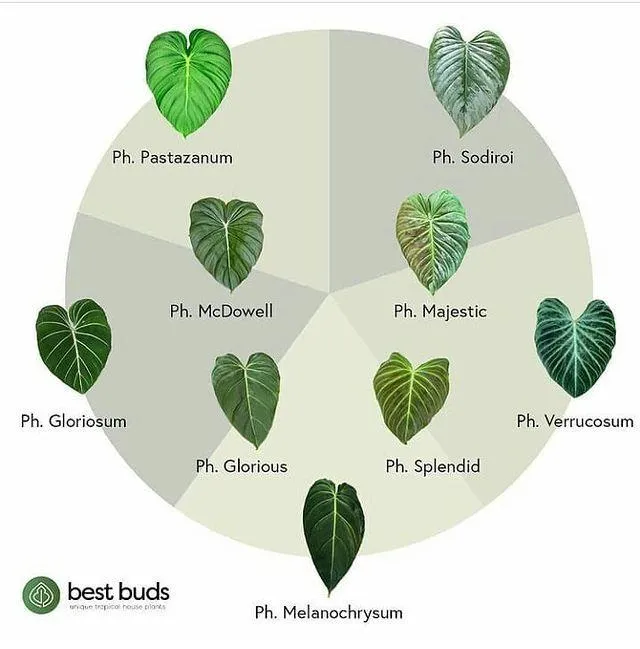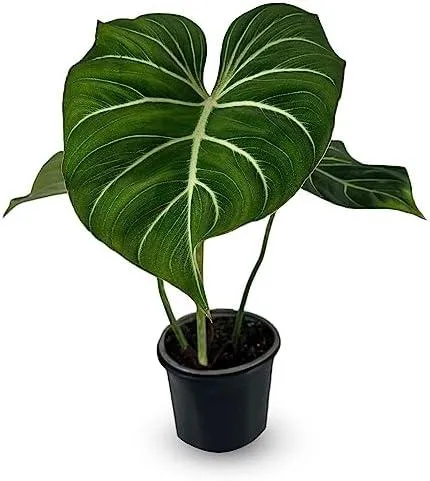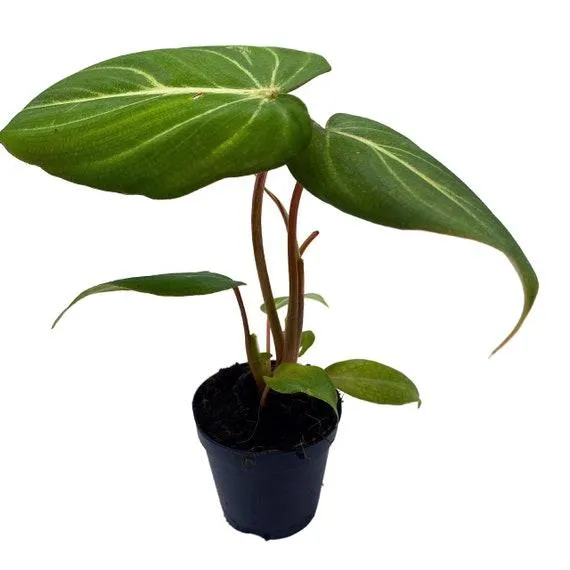Anthurium Gloriosum vs Philodendron Gloriosum: Understanding the Key Differences
As an avid houseplant hobbyist, I’ve owned both anthurium gloriosum and philodendron gloriosum over the years. From my experience, they’re often confused for one another due to their similar names. But enough about names—let’s dive into the key differences between these two beautiful tropical plants.
Growth Habit
The growth habit refers to how and where the plant grows. Anthurium gloriosum has heart-shaped leaves arranged along thick cane-like stems that cascade downwards, giving it a vining appearance. From what I’ve seen, they tend to grow epiphytically on trees in their natural habitat. On the other hand, philodendron gloriosum produces large, glossy leaves on long petioles that stick straight up, more resembling an upright bush than a vine.
Leaves
The leaves are one of the biggest distinguishing features. Anthurium leaves range from 4-8 inches long and are waxy, glossy green with pronounced veins. Their shape is often described as heart or arrowhead-like. By comparison, philodendron leaves can reach a whopping 2 feet long! They have a lush, deep green coloration and are oval to triangular in shape. The leaves almost look fake they’re so perfect, if you know what I’m saying.
Flowers
When it comes to flowers, a major difference emerges. While anthuriums are prized for their colorful, heart-shaped bracts that resemble flowers, philodendrons do not flower indoors. Anthurium flowers appear in clusters on a central stalk called a spadix and come in shades of red, pink, white or orange. So if you see “flowers,” it’s definitely an anthurium. Another strike against poor philodendron!
Care Requirements
In terms of care, both plants prefer warm, humid conditions similar to their tropical rainforest homes. However, anthuriums tend to be marginally harder to care for in my opinion. They demand high humidity, moist soil, and bright indirect light. Any changes can cause their leaves to brown at the edges. Meanwhile, philodendrons are somewhat more forgiving of less-than-ideal conditions. They’re apt to suffer from crispy edges in very dry air but otherwise bounce back readily from the occasional cultural misstep.

Propagation
When seeking to propagate either plant, anthuriums typically require dividing the crowns, which have a reputation for being difficult or risky. In contrast, philodendrons lend themselves well to propagating via stem or leaf cuttings—a breeze compared to anthurium division in my experience. Just stick the cutting in water and roots will soon form. Easy peasy!
Pricing
As for pricing, variegated or rare cultivars of both plants can demand top dollar. However, basic varieties of philodendron gloriosum tend to sell for less than their anthurium gloriosum counterparts in my local plant shops and greenhouses. Perhaps due to anthuriums being deemed harder to grow? Or their prized heart-shaped leaves and floral bracts? It’s tough to say for sure.
Size
Last but not least, maximum size is an important distinction. At maturity, anthurium gloriosum typically reaches 2-3 feet tall. Meanwhile, philodendron gloriosum can span 6-10 feet tips to tips! So if you’re working with limited space, the former may be the better pick. Nothing worse than an out-of-control monstera taking over, amirite?
Other Uses
Beyond aesthetic appeal, both plants offer other uses too. The heart-shaped anthurium leaves and flowers lend themselves to floral arrangements, which some florists pay top dollar for around Valentine’s Day. And let’s be real—nothing says “I love you” like a big bouquet of fancy anthuriums, if you ask me! As for philodendrons, some varieties produce edible shoots that can be cooked or eaten raw. It’s one way to get your veggies indoors, I suppose. Whether or not gloriosum tastes good is beyond me though.
Real-Life Experience
I have a funny story about a mix-up I once had between these two plants. A while back, I saw a listing online for a “philodendron gloriosum” at a great price. Only when I went to check it out did I realize the seller had it labeled wrong—it was clearly an anthurium gloriosum with its heart-shaped leaves! Thankfully, being the plant dork that I am, I recognized the error. But others could easily be fooled. Goes to show it pays to examine plants closely, even if the name tags claim otherwise. You never know!

Frequently Asked Questions
-
Which is harder to care for?
Generally speaking, anthurium gloriosum has a reputation for being slightly more demanding culturally. It requires high humidity, moist soil, and indirect light. Philodendron gloriosum is a bit hardier and more forgiving of less-than-perfect conditions.
-
Do they flower/fruit?
Anthuriums are prized for their colorful heart-shaped bracts that function as flowers. Philodendrons do not flower or fruit as houseplants. Only their lush foliage is admired indoors.
-
How fast do they grow?
Growth rate can vary with cultural conditions. But anecdotally, philodendron gloriosum seems to push out new leaves faster. Anthuriums tend toward a moderate growth, while philodendrons may double in size within a year given optimal care.
-
Which is best for my space?
If concerned about size, anthurium gloriosum stays more compact at 2-3 feet tall. Philodendron gloriosum can reach 6-10 feet wide, so confirm you have sufficient room. Anthurium may also suit smaller spaces better.
Closing Thoughts
In conclusion, while anthurium gloriosum and philodendron gloriosum share similarities as coveted tropical houseplants, they differ in key areas like growth form, foliage traits, flowering ability, care requirements and maximum dimensions. Both deserve a spot in any plant collection willing to provide their preferred warm, humid environment. With a basic understanding of their differences, hopefully this breakdown has helped shed some light on which might be the better pick for your unique space and preferences. Let me know if any other questions arise!

Anthurium Gloriosum vs Philodendron Gloriosum Comparison Table
| Plant Type | Anthurium Gloriosum | Philodendron Gloriosum |
|---|---|---|
| Growth Form | Herbaceous perennial with heart-shaped leaves | Vining plant with broad, lance-shaped leaves |
| Flower | Spadix surrounded by bright red spathe | No flowers, foliage plant |
| Care Level | Moderate, keep soil moist | Low, tolerant of low light and dry soil |
| Toxicity | Non-toxic | Toxic to pets if ingested |
FAQ
-
What is the difference between anthurium gloriosum and philodendron gloriosum?
Basically, anthurium gloriosum and philodendron gloriosum are different types of plants that are commonly mixed up. Anthurium gloriosum is actually a plant in the genus anthurium, while philodendron gloriosum belongs to the philodendron family.
-
What do each of these plants look like?
Anthurium gloriosum has waxy heart shaped leaves and produces red flowers surrounded by a white or pink spathe. Meanwhile, philodendron gloriosum has large shiny leaves with distinctive lobe-like structures and does not flower. Its leaves can reach over 3 feet long!
-
What care requirements do they each need?
When it comes to care, anthurium gloriosum prefers warmer temperatures around 70-80°F while philodendron gloriosum does better in a wider range from 60-85°F. Anthurium also needs high humidity around 50-70% whereas philodendron is more tolerant of normal indoor humidity. They have similar watering needs though – allow the soil to dry out between waterings.
-
Can they be grown together?
Surprisingly, despite their differences, anthurium gloriosum and philodendron gloriosum can be grown together successfully as long as their individual care requirements are met. For example, keeping the humidity up for the anthurium. They make a stunning visual contrast when placed next to each other. What a sight!
-
Which one is hardier for average home conditions?
If you want a low maintenance option, philodendron gloriosum is likely the better choice. It tolerates a wider range of temperatures and humidity than picky anthurium gloriosum. Philodendron is very Hardy and resilient – it can handle average home fluctuations with no complaint! Anthurium may sulk without its tropical pampering.

-
Do they have any uses beyond being houseplants?
While primarily grown as beautiful indoor plants, anthurium gloriosum and philodendron gloriosum have additional functions too. The heart shaped anthurium leaves have been used decoratively in floral arrangements. And do you know some cultures eat philodendron? Strange but true – its new leaves are apparently edible when cooked. Who knew these plants had secret talents!
-
Which one would you recommend for a beginner plant parent?
If you’re new to keeping houseplants alive, I’d recommend starting with the forgiving philodendron gloriosum over the temperamental anthurium gloriosum. Philodendron is about as user-friendly and low maintenance as houseplants come. You’ll be less likely to lose this plant to your clueless overwatering or forgetfulness as a novice plant parent. Baby steps are best when learning to keep plants happy!
